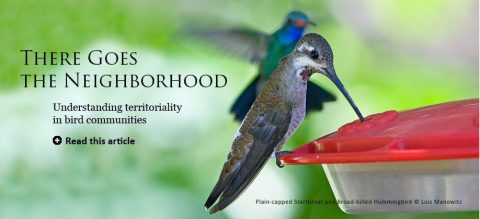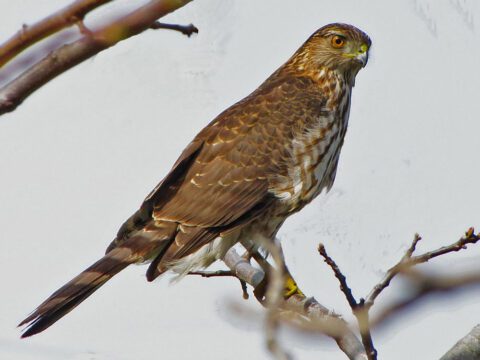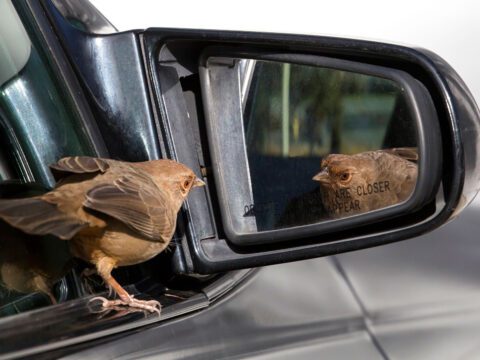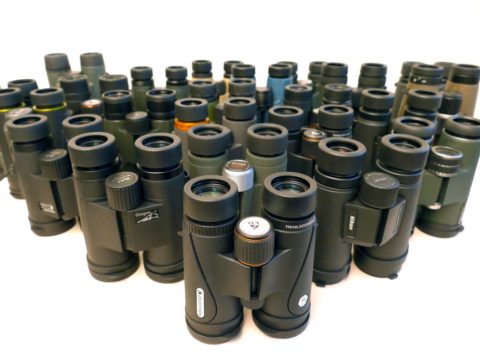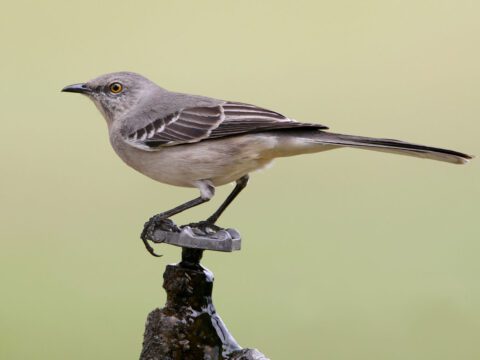Getting Familiar with the Philippines
By Mel White
April 15, 2011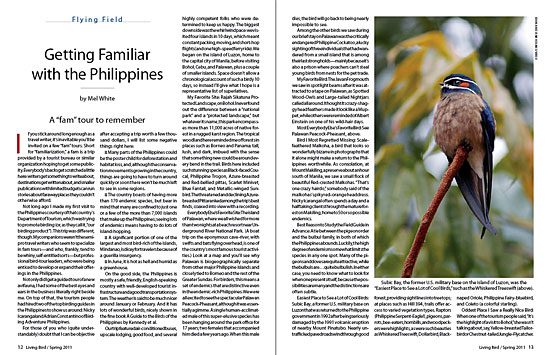
If you stick around long enough as a travel writer, it’s inevitable you’ll be invited on a few “fam” tours. Short for “familiarization,” a fam is a trip provided by a tourist bureau or similar organization hoping to get some publicity. Everybody’s backs get scratched a little here: writers get something to write about, destinations get written about, and smaller publications with limited budgets can run stories about faraway places they couldn’t otherwise afford.
Not long ago I made my first visit to the Philippines courtesy of that country’s Department of Tourism, which was trying to promote birding (or, as they call it, “our birding product”). This trip was different, though. My companions weren’t the semi-pro travel writers who seem to specialize in fam tours—and who, frankly, tend to be whiny, self-entitled sorts—but professional bird-tour leaders, who were being enticed to develop or expand their offerings in the Philippines.
Not only did I get a guided tour of a new avifauna, I had some of the best eyes and ears in the business literally right beside me. On top of that, the tourism people had hired two of the top birding guides in the Philippines to show us around: Nicky Icarangal and Adrian Constantino of Birding Adventure Philippines.
For those of you who (quite understandably) doubt that I can be objective after accepting a trip worth a few thousand dollars, I will list some negative things right here:
◆ Many parts of the Philippines could be the poster child for deforestation and habitat loss, and, although the conservation movement is growing in the country, things are going to have to turn around quickly or soon there won’t be much left to see in some regions.
◆ The country boasts of having more than 170 endemic species, but bear in mind that many are confined to just one or a few of the more than 7,000 islands that make up the Philippines; seeing lots of endemics means having to do lots of island-hopping.
◆ A significant portion of one of the largest and most bird-rich of the islands, Mindanao, is dicey for travelers because of a guerilla insurgency.
◆ In June, it is hot as hell and humid as a greenhouse.
On the good side, the Philippines is mostly a safe, friendly, English-speaking country with well-developed tourist infrastructure and a good transportation system. The weather is said to be much nicer around January or February. And it has lots of wonderful birds, nicely shown in the fine book A Guide to the Birds of the Philippines by Kennedy et al.
Our trip featured air-conditioned buses, upscale lodging, good food, and several highly competent folks who were determined to keep us happy. The biggest downside was the whirlwind pace: we visited four islands in 10 days, which meant constant packing, moving, and short-hop flights (and one high-speed ferry ride). We began on the island of Luzon, home to the capital city of Manila, before visiting Bohol, Cebu, and Palawan, plus a couple of smaller islands. Space doesn’t allow a chronological account of such a birdy 10 days, so instead I’ll give what I hope is a representative list of superlatives.
My Favorite Site: Rajah Sikatuna Protected Landscape, on Bohol. I never found out the difference between a “national park” and a “protected landscape,” but whatever its name, this park encompasses more than 11,000 acres of native forest in a rugged karst region. The tropical woodland here reminded me of forests in places such as Borneo and Panama: tall, lush, and dark, imbued with the sense that something new could be around every bend in the trail. Birds here included such stunning species as Black-faced Coucal, Philippine Trogon, Azure-breasted and Red-bellied pittas, Scarlet Minivet, Blue Fantail, and Metallic-winged Sunbird. The threatened and declining Azure-breasted Pitta ranked among the trip’s best finds, coaxed into view with a recording.
Everybody Else’s Favorite Site: The island of Palawan, where we all wished for more than two nights at a beach resort near Underground River National Park. (A boat trip on the eponymous cave-river, with swifts and bats flying overhead, is one of the country’s most famous tourist activities.) Look at a map and you’ll see why Palawan is biogeographically separate from other major Philippine islands and closely tied to Borneo and the rest of the Greater Sundas. For birders, this means a set of endemics that are distinctive even in the endemic-rich Philippines. We were all excited to see the spectacular Palawan Peacock-Pheasant, although it was essentially a gimme. A single human-acclimated male of this super-elusive species has been hanging around the park office for 17 years; two females that accompanied him died a few years ago. When this male dies, the bird will go back to being nearly impossible to see.
Among the other birds we saw during our brief stay on Palawan was the critically endangered Philippine Cockatoo, a lucky sighting of three individuals that had wandered from a small island that is among their last strongholds—mainly because it’s also a prison where poachers can’t steal young birds from nests for the pet trade.
My Favorite Bird: The Javan Frogmouth we saw in spotlight beams after it was attracted to a tape on Palawan, as Spotted Wood-Owls and Large-tailed Nightjars called all around. I thought its crazy-shaggy head feathers made it look like a Muppet, while others were reminded of Albert Einstein on one of his wild-hair days.
Most Everybody Else’s Favorite Bird: See Palawan Peacock-Pheasant, above.
Bird I Most Regretted Missing: Scale-feathered Malkoha, a bird that looks so wonderfully bizarre in photographs that it alone might make a return to the Philippines worthwhile. As consolation, at Mount Makiling, a preserve about an hour south of Manila, we saw a small flock of beautiful Red-crested Malkohas. “That’s one crazy hairdo,” somebody said of the malkohas’ spiky red-orange headdress. Nicky Icarangal often spends a day and a half taking clients through the mature forest on Makiling, home to 50 or so possible endemics.
Best Reason to Study the Field Guide in Advance: A tie between the pigeon order and the bulbul family, in both of which the Philippines abounds. Luckily, the high degree of endemism somewhat limits the species in any one spot. Many of the pigeons and doves are quite attractive, while the bulbuls are…quite bulbulish. In either case, you need to know what to look for when one presents itself, because the possibilities are many and the distinctions are often subtle.
Easiest Place to See a Lot of Cool Birds: Subic Bay, a former U.S. military base on Luzon that was returned to the Philippine government in 1992 after being seriously damaged by the 1991 volcanic eruption of nearby Mount Pinatubo. Nearly untrafficked paved roads wind through good forest, providing sightlines into treetops; at places such as Hill 394, trails offer access to varied vegetation types. Raptors (Philippine Serpent-Eagle!), pigeons, parrots, bee-eaters, hornbills, and woodpeckers were highlights, as were such beauties as Whiskered Treeswift, Dollarbird, Black-naped Oriole, Philippine Fairy-bluebird, and Coleto (a colorful starling).
Oddest Place I Saw a Really Nice Bird: When one of the tourism people said, “It’s the highlight of a visit to Bohol,” she wasn’t talking about, say, Yellow-breasted Tailorbird or Chestnut-tailed Jungle-Flycatcher. She was talking about a lunch cruise on the Loboc River, complete with buffet, drinks in coconut shells, and a combo playing American pop tunes. It was just the kind of cheesy tourist attraction that you get roped into on fam tours, because cheesy tourist attractions are what most fam tours are all about. Well, the Loboc River cruise was cheesy, but it also brought a sighting of the pretty little Silvery Kingfisher, a bird we had sought and missed along a stream near Rajah Sikatuna Protected Landscape. If you want to see a boat pilot look alarmed, just have a dozen people hop up from their tables and crowd into a corner of the deck all at once. And speaking of kingfishers…
Most Strikingly Attractive Bird Groups: I could say parrots (the Philippine Hanging Parrot is gorgeous), but that would be too easy. Collectively, the seven species of kingfisher and eight sunbirds I saw comprised every color of the spectrum.
Biggest Cultural-Ornithological Coincidence that Wasn’t Really a Coincidence: We spent one night on Luzon at Villa Escudero, an odd mixture of river resort, kitschy outdoor art gallery, nature reserve, coconut plantation, museum, and housing development. The landscaped grounds around the lodge were beautiful, and though at first glance they seemed unsuitable for much birding, that first impression was wrong. Members of the land-owning family have embraced ecotourism in a big way, going so far as to improve a wetland on the property to make it more appealing to marsh birds.
In one of those convergences that make travel fascinating, we sat in a barnlike banquet hall at dinner and watched a local dance troupe perform the traditional Philippine tinkling, in which two people kneel and clap long bamboo poles together while dancers hop in and out of the poles in rhythm. The dance is named fortickling, the local term for a rail: dancers mimic the graceful, high-stepping gait of the bird as it walks through the marsh vegetation. In the Villa Escudero marsh the next morning, we saw several members of the Rallidae including Buff-banded and Barred rails, White-breasted Waterhen, White-browed Crake, and Watercock.
Second-Rarest Bird We Saw (After the Philippine Cockatoo, That Is): Who knows, really? (After all, how many Palawan Peacock-Pheasants could there be?) But it might have been the Chinese Egret, which breeds in and around the Korean peninsula and may number as few as 3,000 individuals. Six migratory birds were still hanging around Olango Island Wildlife Sanctuary, at a very small island off the small island of Mactan, which lies next to the major island of Cebu. The sanctuary, 2,500 acres of tidal flats and mangroves, can host 30,000 waders and shorebirds of 40 species at peak winter season; we saw around 16 species in late spring.
In 1521, Portuguese explorer Ferdinand Magellan met his death on Mactan Island when he and 48 companions came ashore to meet a force of 1,500 natives, who were in no mood to be converted to Christianity. Today, Mactan is the Philippines’ version of Miami Beach, with stretches of high-rise hotels along the coast and many, many portraits of local hero (and Magellan-slayer) Lapu-Lapu in Schwarzeneggeresque poses.
Best Moment of Pure Dumb Luck: The freeway between Manila and Subic Bay passes through extensive wetlands where waders, shorebirds, and terns abound and where, frustratingly, there was absolutely no place to pull over and scan even for a couple of minutes. At 60 miles per hour, though, the experts in the bus were constantly calling out “Whiskered Tern” or “Purple Swamphen.” At my moment of dumb luck, another fellow and I happened to glance out and spot a Greater Painted-Snipe sitting on a dirt mound, its white “shoulder” stripe making it unmistakable. It’s a bird I had long admired in field guides; this may have been the briefest sighting of a lifer I’ve ever had, and was the cause of much groaning from people who were looking the wrong way.
Best Nonfeathered Critter of the Trip: On Bohol we made a quick visit to a tarsier sanctuary, where these nocturnal primates can be seen during the day. The tarsier’s tiny (about fist-sized) body, huge eyes, Yoda-like ears, and weirdly elongated digits give it a kind of appeal more commonly found in Pixar movies.
Final Thoughts: I didn’t envy Nicky’s and Adrian’s job of leading a gaggle of expert bird guides; it seemed the equivalent of having to cook for a group of celebrity chefs. They were definitely up to the task, though, and even in the context of our whirlwind schedule proved able to find and lure into view an amazing number of the endemics they knew were the most-wanted birds.
The Department of Tourism folks turned out to be genuinely interested in learning about birding, and I have to give them credit: they got up with us every morning, no matter how early, walked the trails and sweated with us, and gamely peered through telescopes not only at big, impressive things like hornbills but at drab tailorbirds and even drabber bulbuls. I’m quite sure that by the end of the trip they not only saw the appeal of birding but, more importantly, began to understand the significance of their own endemic birds and the necessity of conserving varied habitats. Here’s hoping they put that knowledge to use where it counts: in government offices where decisions are made that will determine the fate of the Philippine environment.

All About Birds
is a free resource
Available for everyone,
funded by donors like you
American Kestrel by Blair Dudeck / Macaulay Library
